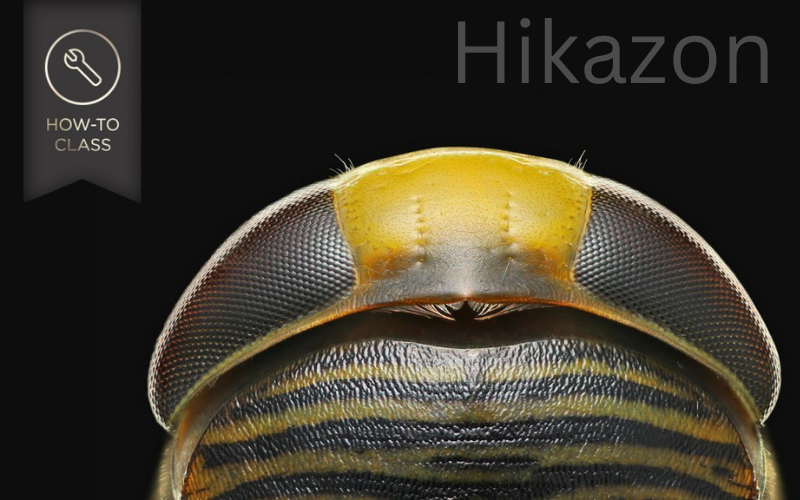-
×
 Community Building By Carrie Melissa Jones
1 × $39.00
Community Building By Carrie Melissa Jones
1 × $39.00 -
×
 Organic social media By Phil Nottingham
1 × $39.00
Organic social media By Phil Nottingham
1 × $39.00 -
×
 Get Allison’s New SPX Lotto Pins Formula - Pro Package - Simpler Trading
1 × $62.00
Get Allison’s New SPX Lotto Pins Formula - Pro Package - Simpler Trading
1 × $62.00 -
×
 Premiere Pro Quickstart + Power User Pack By Film Editing Pro
1 × $15.00
Premiere Pro Quickstart + Power User Pack By Film Editing Pro
1 × $15.00 -
×
 Program Design Essentials Playlist By Learnrx
1 × $46.00
Program Design Essentials Playlist By Learnrx
1 × $46.00 -
×
 Local GMB Pro By Bradley Benner
1 × $31.00
Local GMB Pro By Bradley Benner
1 × $31.00 -
×
 Lux Travel Hacks By Andy Cantu
1 × $23.00
Lux Travel Hacks By Andy Cantu
1 × $23.00 -
×
 Scalping is Fun Course By Peter Devaere
1 × $109.00
Scalping is Fun Course By Peter Devaere
1 × $109.00 -
×
 The Complete Guide to Custom Lettering By Jon Contino
1 × $31.00
The Complete Guide to Custom Lettering By Jon Contino
1 × $31.00 -
×
 Sharp Edge Institutional Trading Program 2022 (No Indicator) By CompassFX
1 × $139.00
Sharp Edge Institutional Trading Program 2022 (No Indicator) By CompassFX
1 × $139.00 -
×
 Master Moving Averages - Profit Multiplying Techniques By Nick Santiago - InTheMoneyStocks
1 × $54.00
Master Moving Averages - Profit Multiplying Techniques By Nick Santiago - InTheMoneyStocks
1 × $54.00 -
×
 3D Mockup Mega Pack by VirtualThreads - 3D Animated Mockups
1 × $5.00
3D Mockup Mega Pack by VirtualThreads - 3D Animated Mockups
1 × $5.00 -
×
 Into The Light: The Complete Series By Hemi-Sync
1 × $31.00
Into The Light: The Complete Series By Hemi-Sync
1 × $31.00 -
×
 90 Days To Trade MasterClass By Jerremy Newsome & Matt Delong - Real Life Trading
1 × $104.00
90 Days To Trade MasterClass By Jerremy Newsome & Matt Delong - Real Life Trading
1 × $104.00
Beyond Macro Photography: Into the Microscopic World By Charles Krebs
$14.00 $5.00
SKU: HIK.52656mpI0mF
Category: Photography & Art
Tags: Beyond Macro Photography, Charles Krebs, the Microscopic World
Beyond Macro Photography: Into the Microscopic World By Charles Krebs – Digital Download!
Content Proof:
Beyond macro photography: into the microscopic world
In the dynamic and ever-evolving landscape of photography, where each click of the shutter harbors the potential to unveil hidden treasures, Charles Krebs introduces us to a mesmerizing journey through the unseen dimensions of nature. His course, Beyond macro photography: into the microscopic world, offered on CreativeLive, invites photographers to step away from the familiar grounds of macro photography and embrace the astounding beauty that exists at microscopic levels. This transformative experience doesn’t merely teach technique; it cultivates a profound appreciation for the intricate minutiae that our eyes often overlook. The course highlights the complex interplay of artistry and scientific inquiry, intertwining narrative and imagery to celebrate the splendor of the microscopic world. Let’s dive deeper into the vital components of this enlightening program, dissect its curriculum, and explore its unique significance in the field of photography.
Understanding photomicrography
Photomicrography, at its core, is the art and science of taking photographs through a microscope. It encompasses a world within a world, revealing subjects that exist far beyond the reach of the naked eye. The allure of this discipline lies in its ability to bridge the vast realms of macro photography and microscopy. While macro photography captures subjects that are small yet visible, photomicrography elevates the subject matter to extraordinary magnifications, revealing colors, textures, and shapes with astonishing clarity.
The techniques employed
In Krebs’s course, various essential techniques are laid out before aspiring photomicrographers. Students are introduced to the fundamental use of microscope optics, camera equipment, and how to navigate the obstacles that arise at such minute scales. Techniques such as focus stacking are emphasized as crucial for producing sharp, detailed images when working with high magnifications. This technique involves capturing multiple images at different focus distances and then combining them into a single photo that showcases the entire depth of the subject.
Focus stacking serves as a metaphor for the meticulous attention required in photomicrography. Just as a puzzle reveals its full picture only when each piece aligns perfectly, so too does a photomicrograph reveal its richness only when all focus points are harmonized. This is especially important given the limited depth-of-field common at microscopic levels, where even minor adjustments can significantly impact the final outcome.
Equipment essentials
When delving into this microcosmic realm, the choice of equipment can significantly affect one’s photographic journey. Krebs discusses various setups and microscope optics that suit different types of photography. Some notable options include:
- Compound microscopes: Ideal for examining thin slices of biological samples.
- Stereo microscopes: Perfect for three-dimensional views of larger specimens.
- Digital cameras with adapters: Essential for connecting digital cameras to microscopes, allowing for higher-resolution images.
By presenting a clear comparison of these setups, Krebs helps photographers understand which tools will best suit their objectives and the types of subjects they wish to explore. For instance, a compound microscope enables photographers to observe cellular structures, while a stereo microscope allows for a more tactile approach to photographing larger specimens, such as insects.
Overcoming optical challenges
As photographers venture into the microscopic world, they inevitably encounter various optical challenges. Krebs provides valuable insights on addressing these hurdles effectively, ensuring that participants are well-equipped to handle the intricacies of photomicrography.
Common difficulties
Among the common challenges highlighted in the course are:
- Limited depth of field: At high magnifications, achieving focus on the entire subject becomes arduous. Focus stacking, as previously mentioned, becomes a lifesaver here.
- Vibration issues: Any small movement can result in blurred images. Krebs advises on stabilizing setups and using remote triggers to minimize disturbances during exposure.
- Lighting concerns: Adequate lighting is crucial in this discipline, and Krebs explains various techniques for illuminating microscopic subjects effectively, using tools like ring lights or external flashes to achieve the ideal brightness.
Tools and techniques to the rescue
In teaching participants how to tackle these problems, Krebs emphasizes a combination of equipment setup and advanced techniques. For lighting, he discusses the merits of using LED lights, which can be adjusted for intensity and angle, ensuring that even the tiniest detail is well-lit and visible. He likens good lighting to the “sunshine” reaching the hidden corners of a forest illuminating the beauty that lies in shadow.
Additionally, the course tackles techniques such as image stitching and aperture control all aimed at enhancing clarity and detail in photographs. Each technique serves as a piece of a larger puzzle, equipping photographers to paint vibrant pictures with minute brushstrokes through a microscope.
Inspiring creativity and appreciation
At its heart, Krebs’s course isn’t solely about mechanics; it’s about fostering a deeper emotional connection to the unseen world around us. Photography is intrinsically tied to observation and appreciation of beauty, and the microscopic world is rich with fascination. As participants learn to navigate this intricate landscape, they experience a transformation of perspective.
Real-world applications
By exploring examples from various fields, Krebs educates photographers not only on the beauty of photomicrography but also on its scientific significance. Applications span diverse areas, including biology, materials science, and forensic investigations. For instance, in the field of biological research, capturing images of microorganisms or plant cells can lead to significant insights and findings. The artistry of photography aligns seamlessly with the precision of scientific inquiry, sparking curiosity and innovation.
Emotional resonance
The emotional impact of viewing the world through a microscope cannot be overemphasized. Each image captures intricate details that provoke wonder and reflection. The course encourages participants to share their epiphanies and personal discoveries, creating a space where creativity flourishes. Krebs’s encouragement draws on the idea that art and science can coexist harmoniously, inspiring photographers to see photomicrography not just as a technical challenge, but as a medium for storytelling.
Accessibility for all photographers
One of the most compelling aspects of Beyond macro photography: into the microscopic world is its inclusivity. Designed for individuals at various skill levels, the course reaches not only seasoned photographers but also eager beginners ready to unravel the mysteries of photomicrography. This accessibility fosters a community of learners, encouraging camaraderie and sharing of ideas and experiences.
A supportive learning environment
Krebs understands that the transition from macro to micro photography can be daunting. Thus, he provides a supportive framework, offering practical advice and encouragement. Participants engage in discussions, share their challenges, and celebrate their successes, creating an atmosphere where learning thrives.
For beginners, this course serves as an invitation to foster their passion for photography and science alike. With Krebs’s guidance, novices can learn to navigate the complexities of photomicrography with confidence, transforming their initial trepidation into excitement and discovery.
Inspiration through exploration
As participants embark on their photomicrographic journeys, Krebs instills the idea that exploration is as vital as technique. He encourages photographers to immerse themselves in their surroundings, searching for hidden wonders whether that be water droplets containing microorganisms or fine details on leaves. Each microcosmos tells a story waiting to be uncovered. The course nurtures this appreciation, promoting a mindset that sees beauty in the most unexpected places.
Conclusion
In the vast expanse of photography, Charles Krebs’s course, Beyond macro photography: into the microscopic world, stands as a beacon, illuminating the intricate beauty that often eludes our vision. By blending technical expertise with artistic exploration, Krebs invites us to celebrate the unseen worlds around us. The curriculum is a thoughtful blend of techniques, equipment knowledge, and emotional engagement that speaks not only to photographers looking to refine their skills but to anyone intrigued by the hidden wonders that pervade our environment. Through Krebs’s guidance, we discover that the tiniest details can yield the most profound insights reminding us that art and science are intricately woven into the fabric of our lives, urging us to look closer, explore further, and appreciate the beauty inherent in the smallest of creations.
Frequently Asked Questions:
Business Model Innovation: We use a group buying approach that enables users to split expenses and get discounted access to well-liked courses.
Despite worries regarding distribution strategies from content creators, this strategy helps people with low incomes.
Legal Aspects to Take into Account: Our operations’ legality entails several intricate considerations.
There are no explicit resale restrictions mentioned at the time of purchase, even though we do not have the course developers’ express consent to redistribute their content.
This uncertainty gives us the chance to offer reasonably priced instructional materials.
Quality Assurance: We guarantee that every course resource you buy is exactly the same as what the authors themselves are offering.
It’s crucial to realize, nevertheless, that we are not authorized suppliers. Therefore, the following are not included in our offerings:
– Live coaching sessions or calls with the course author.
– Entry to groups or portals that are only available to authors.
– Participation in closed forums.
– Straightforward email assistance from the writer or their group.
Our goal is to lower the barrier to education by providing these courses on our own, without the official channels’ premium services. We value your comprehension of our distinct methodology
Be the first to review “Beyond Macro Photography: Into the Microscopic World By Charles Krebs” Cancel reply
You must be logged in to post a review.
Related products
Photography & Art
Fine-Art Portraiture with Sandro Miller: Lighting Posing and Retouching for Composites
Photography & Art
Photography & Art
3D LUT PROFILES and COLOR GRADING PRESETS: NOLA NATURAL LIGHT by PRO EDU



















Reviews
There are no reviews yet.